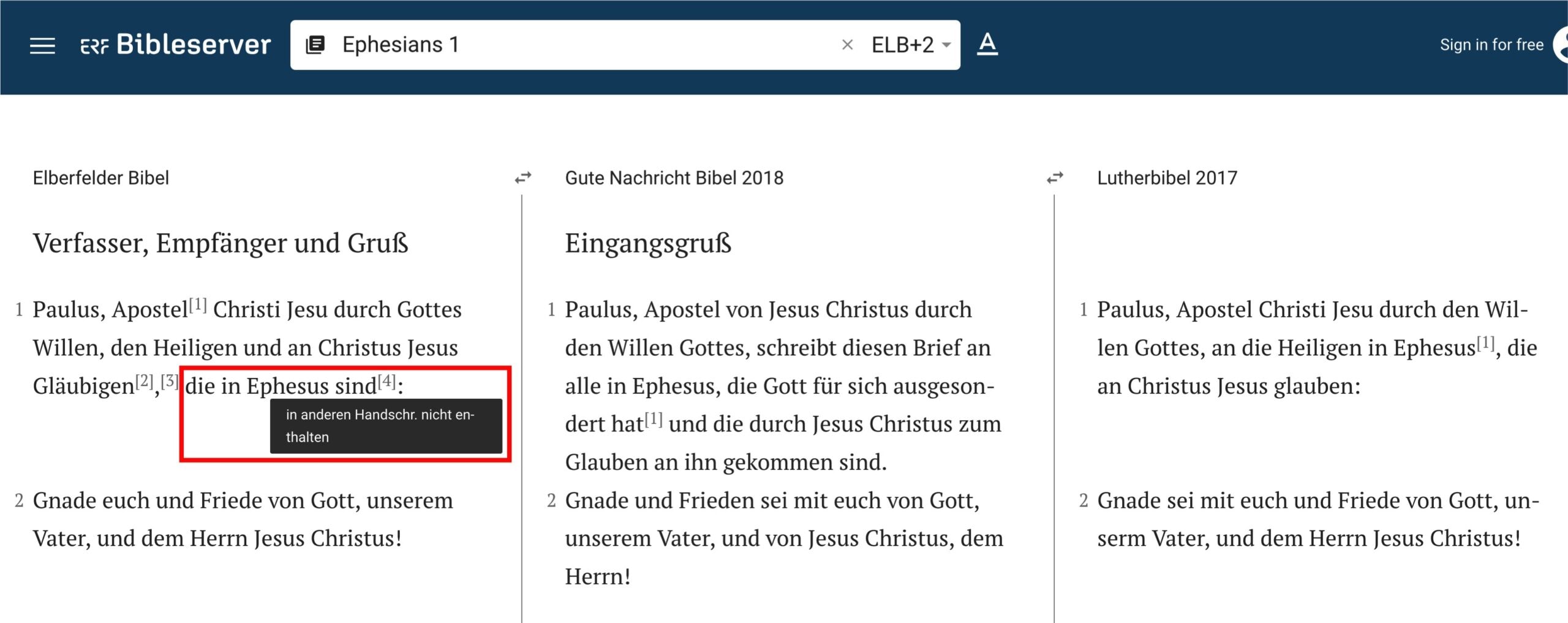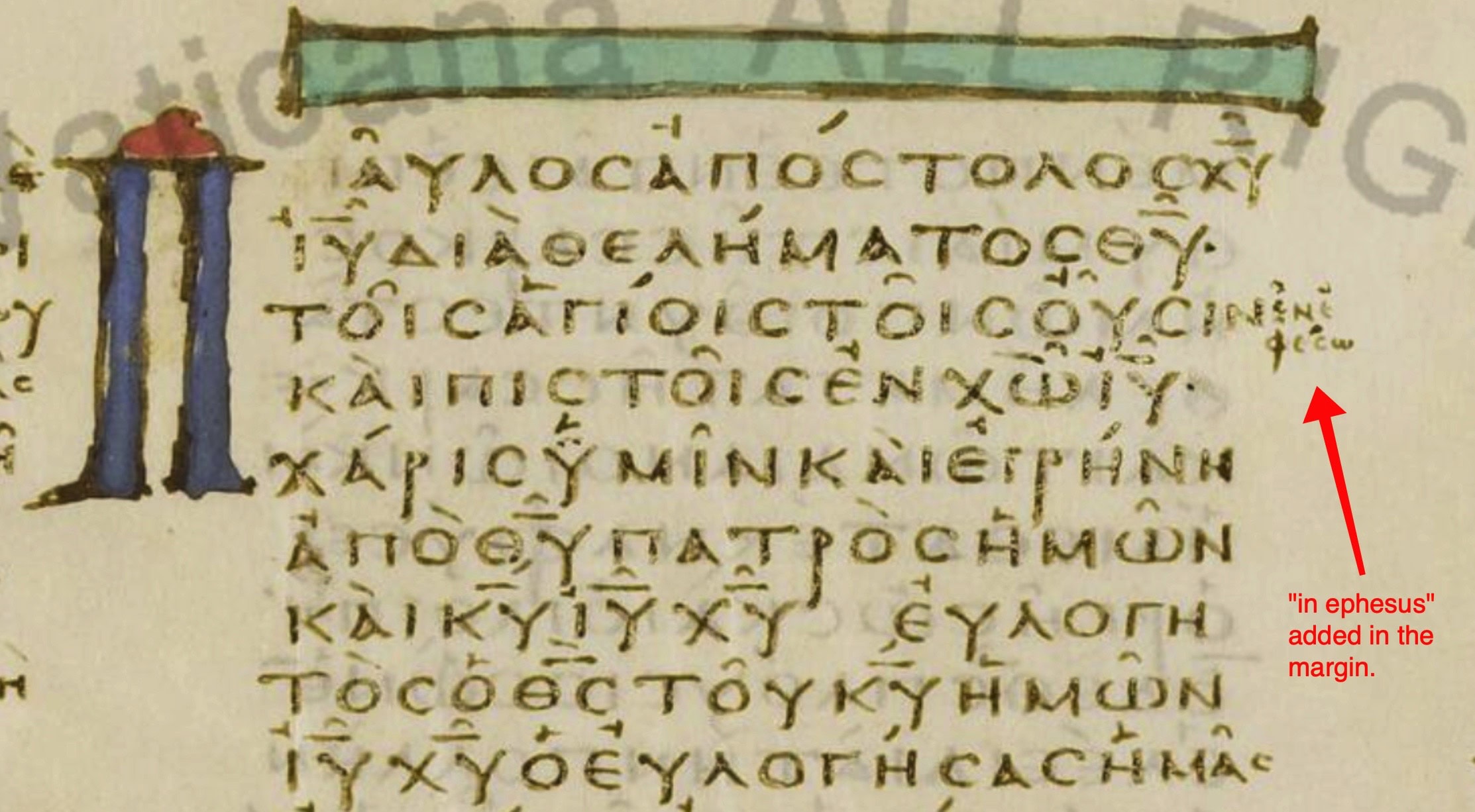The name of the letter to the Ephesians comes from the first verse. It often says “in Ephesus”. However, these words are missing in many of the oldest manuscripts. Today, many things can already be checked online because old manuscripts have been digitized. Below are two links where you can look up these interesting details for yourself.
The letter to the Ephesians begins as follows:
“Paul, an apostle of Christ Jesus by the will of God, to the saints and believers in Christ Jesus who are in Ephesus.”
Eph 1,1 Elbf.
It was customary in those days to give your own name first. If you open a scroll, for example, you see the sender first and don’t have to open the whole scroll. That is why Paul begins with his own name. He then describes how he sees himself and the function in which he is writing this letter, namely as an “apostle of Christ Jesus by the will of God”. He also mentions the people he is addressing: “the saints and believers in Christ Jesus who are in Ephesus”.
We will come back to the sender and addressee in another article. Here I would first like to emphasize the words “who are in Ephesus”. These words are missing in the oldest and most manuscripts. You might think that Paul is writing a letter specifically to the church in Ephesus. He also did this by writing two personal letters to Timothy, who worked in Ephesus for a long time. However, he never wrote a church letter to the Ephesians.
Here are various translations from the website bibleserver.com and in the Elberfelder translation I have highlighted the footnote:
No letter to the Ephesians
The footnote states that the words “who are in Ephesus” are not included in other manuscripts. They slipped in later, but were not part of the original letter. Paul was not writing specifically to the Ephesians, but presumably a general circular letter, comparable to a newsletter today, which he knew would be passed around in various churches.
Today, many old manuscripts have been digitized and are accessible to everyone. Therefore, here are two older manuscripts with brief references. The Codex Vaticanus shows that the words “in Ephesus” were added in the margin. This is not a correction based on other old manuscripts because they did not have this addition. It can be assumed that it was a remark from another source that was written down here.
Some translations therefore omit the words “who are in Ephesus”. The Concordant New Testament (KNT) reads something like:
“Paul, an apostle of Christ Jesus by the will of God, to all the saints who are also believers in Christ Jesus.”
Eph 1:1 CNT
Today, this can be easily understood using digital editions of old manuscripts.
Codex Vaticanus
In the Codex Vaticanus, these words are mentioned next to the text column, as a clear later addition. The Codex Vaticanus is now digitized. You can look this up yourself (link below, page 1493).
A PDF file is also available in the Internet Archive:
Codex Sinaiticus
The words “in Ephesus” are missing in Codex Sinaiticus, for example. The linked page is about the 4th column, where Ephesians begins at the top.
Circular letter
From these few remarks, we can see that the apostle Paul’s ministry has by no means come to a standstill since he was imprisoned in Rome. His letters, like this one, were intended for a wider audience. It is church doctrine, and what he wrote in this letter did not refer to a special situation of just one church, but was a general article of faith for all churches.
In Colossians, Paul explicitly refers to such circular letters, which were intended for several churches:
“When the letter has been read by you, make sure that it is also read in the called-out church of the Laodiceans and that you also read the one from Laodicea.”
Col 4:16




